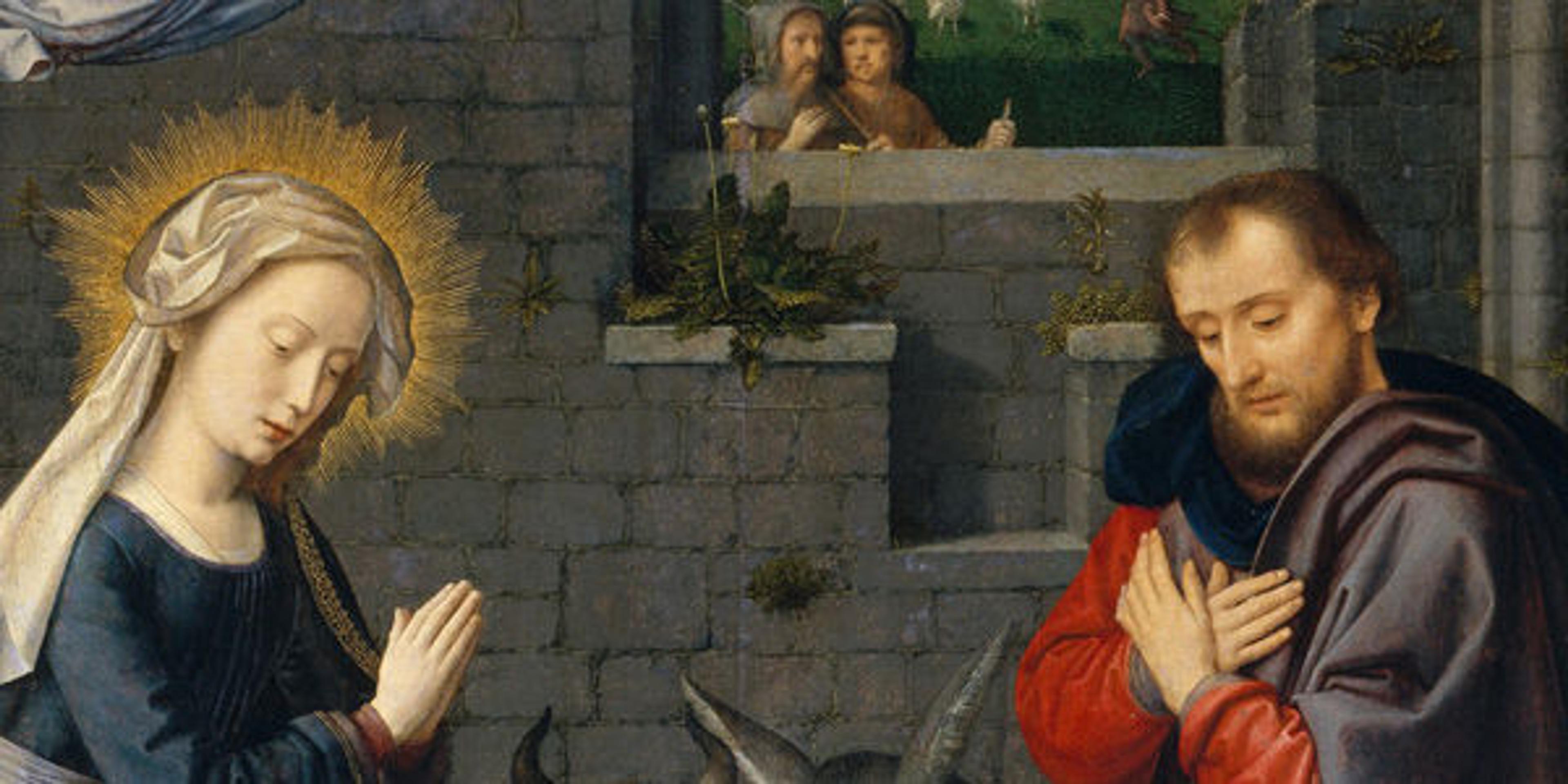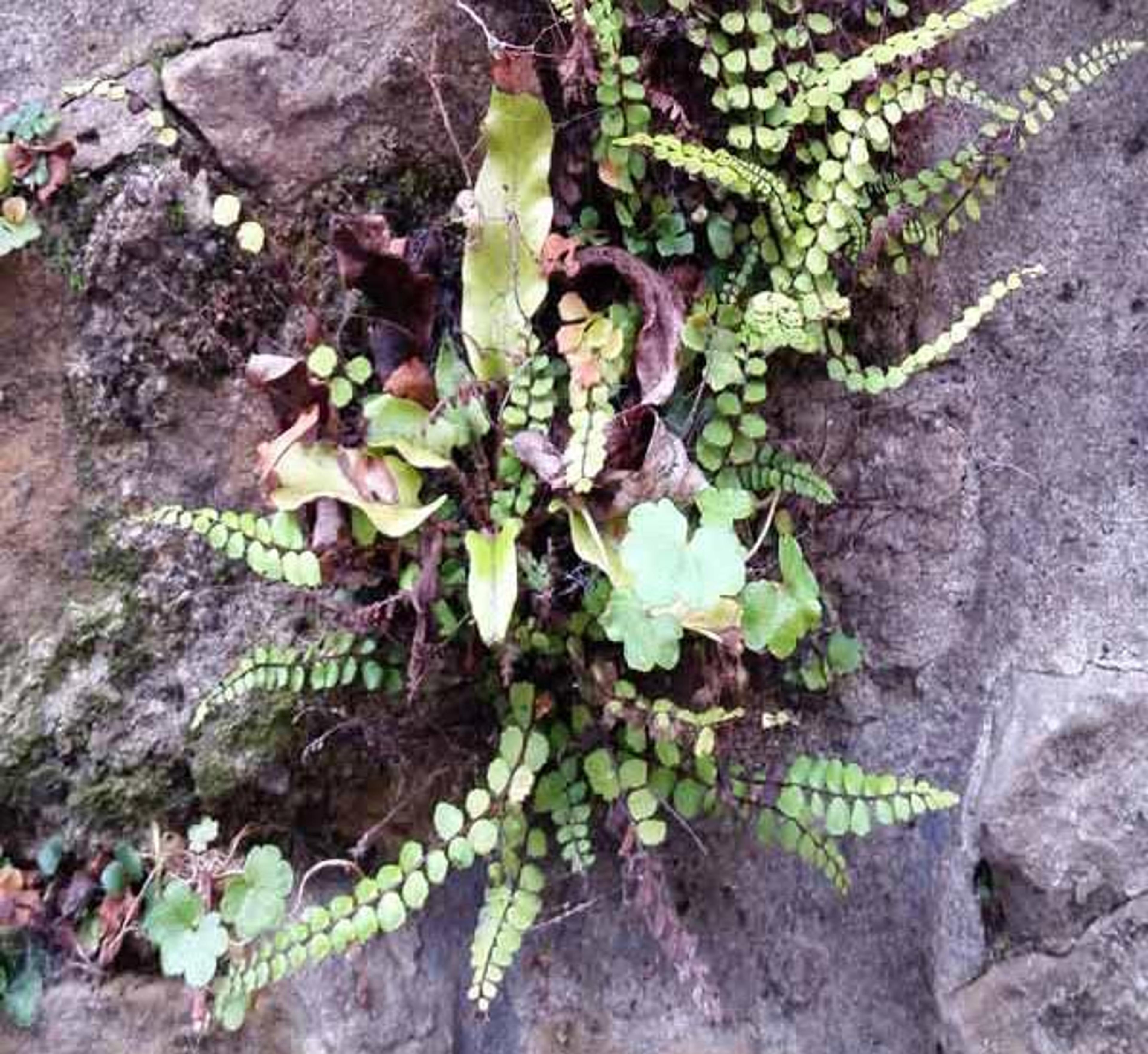
Gerard David (Netherlandish, ca. 1455–1523). The Nativity with Donors and Saints Jerome and Leonard (detail), ca. 1510–15. Oil on canvas, transferred from wood. The Metropolitan Museum of Art, New York, The Jules Bache Collection, 1949 (49.7.20a–c). The croziers, or fiddleheads and fronds (the leaf-like part), of ferns are a common motif in art, architecture, and religious ceremony, and at least two fern species are apparent in this work. There appears to be wall rue (Asplenium ruta-muraria) and the common spleenwort (Asplenium trichomanes) springing from the mortar joints.
«The details that artists choose to embellish in their works offer a small glimpse into what they value. Such is the case with the Gerard David (ca. 1455–1523) painting The Nativity with Donors and Saints Jerome and Leonard, shown above. I examined this Nativity scene in the course of my research on the important plant stuffs associated with the medieval Christmastide feast. In this case, the sheaf of wheat as a symbol of the Eucharist was the object of my attention, but what piqued my curiosity was the variety of flora illustrated in the cracks of the walls.»
The plants in the walls could merely reflect the artist's faithful representation of what he witnessed. Medieval stone buildings were generally constructed with lime mortar, a far-less-durable binder than modern cement. The results produced structures with a myriad of fissures between the stones. While this makes conservation problematic, these crevices would have been ripe to be colonized by plants. Ferns, sometimes referred to as "cryptogams" (plants that reproduce with spores, without flowers or seeds), are capable of producing millions of spores per plant. Each dispersed spore, often aided by wind, can potentially give rise to another plant. The ferns in the walls would have been among the first plants to emerge from the cracks in the stones, and the spleenworts (Asplenium sp.) likely depicted in the painting are calcicoles, or calcium loving, and would have been at home in the lime-rich wall of the painting.

Cliff brake (Pelleae sp.) and ebony spleenwort (Asplenium platyneuron) growing in The Cloisters' walls along the upper drive. These two ferns retain their green fronds throughout the winter. They are also distinguished by the separate and distinct fertile or spore-bearing fronds that stand above the sterile fronds. The erect, fertile fronds are positioned to better catch a passing breeze in which to release their spores. Photographs by Caleb Leech

Hart's tongue fern (Asplenium scolopendrium) growing with the common spleenwort (Asplenium trichomanes) in a wall along the Water of Leith Walkway in the medieval Dean Village area of Edinburgh, Scotland. The hart's tongue fern was commonly used in medieval medicine and artworks. Photo by Christina Alphonso
While the setting of the painting could simply depict the common state of stone buildings during the Middle Ages, I believe it also demonstrates a love for the bucolic, ramshackle idyll of nature. This same sentiment is witnessed in the modern Gothic folly (an ornamental building with no practical use), or in a recreated medieval ruin set amidst a garden. Then, perhaps even more than now, weedy or opportunistic species like ferns and dandelions were much appreciated. The artist's careful attention to the ferns softened the setting and emphasized how much the medieval world was fundamentally connected with plants.
As part of our restoration of the Trie Cloister garden, we hope to include ferns within the brick work and have had significant discussions about the inclusion of a turf bench. Turf benches, a common feature in medieval pleasure gardens, are often depicted with sides of brick and mortar and topped with a matrix of grass-like species and other diminutive, flowering herbs. Our aim is to grow ferns in the spaces on the sides in addition to the grass-like plants on the top.
Perhaps adhering to medieval building techniques will help. Does anyone have experience of building with lime mortar?
Related Link
Gerard David: Purity of Vision in an Age of Transition